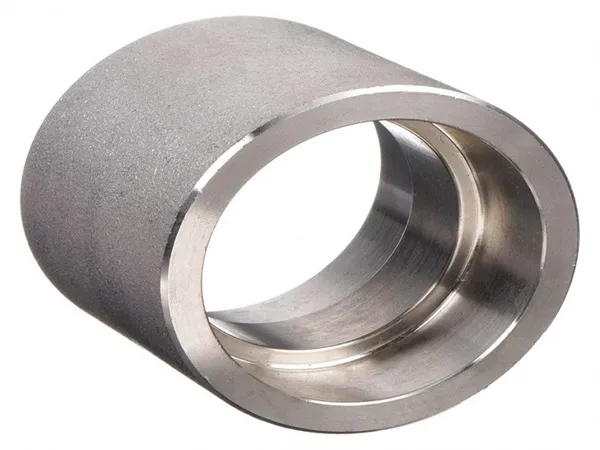Forged Stainless Steel Fittings
Elite Piping Manufacture is your premier source for high-quality forged stainless steel fittings. Contact us today with your requirements and experience the excellence of our products. We will provide you with quality service and give you a pleasant shopping experienceExperience top-notch service and enjoy a delightful shopping experience.
Forged Stainless Steel Fittings Models
Forged stainless steel fittings refer to objects in which stainless steel materials are subjected to pressure and are shaped into the required shape or appropriate compression force through plastic deformation. This force is typically achieved through the use of a hammer or pressure.

The Specific Classification Of Forged Stainless Steel Fittings
First, this kind of product can be divided into different types according to the movement mode of the entire processed material. The most common ones are free forging and die forging.
Free forging mainly uses the impact force, or greater pressure, generated by man-made machines to change the shape of the stainless steel metal material between two anvil blocks to obtain the required parts. Of course, it can also be divided into the utilization of man-made machines and the utilization of artificial intelligence according to the scale and requirements of different enterprises.
Die forging mainly uses open and closed methods to cause certain stainless steel materials to be greatly extruded in a certain mold, thereby changing their shape.
Secondly, stainless steel forgings can also be divided into three categories according to the effect of temperature. The most common ones are hot and cold forging, and the one in the middle is warm forging.
These methods can be selected according to the different requirements of relevant industries. Sometimes, they may be combined in two ways to play a more precise role so that stainless steel materials can be used according to certain specifications. Standards are used to carry out various shape changes. As long as further improvements can be achieved, these methods can be used for forging.
Customization Process Of Forged Stainless Steel Fittings
The responsibility for material control is shared between the forged stainless steel fittings ordering unit and the supply unit. The ordering unit for forged stainless steel fittings is responsible for the design, material selection, and proposal of control requirements in production and manufacturing.
After the stainless steel forging supply unit implements appropriate process control and inspection, the stainless steel forging ordering unit (or main contractor) should also approve the stainless steel forging supply unit’s production equipment and production capacity. In contrast, the stainless steel forging supply unit is often limited to being responsible for returns and damages. or stainless steel forgings that do not meet the technical requirements.
Selection of Materials The ordering unit (or design unit) of stainless steel forgings is also partly responsible for preparing technical conditions and drawings when selecting materials. The drawings must indicate the sampling locations on the stainless steel forgings and specify the type of test and the number of sub-products for a stainless steel forging. mission.

When materials with well-known mechanical properties are selected, standard technical conditions can be used; when materials and processes under development are selected, and, therefore, standard technical conditions cannot be used, the design unit should be responsible for providing temporary technical conditions to ensure that the required performance is achieved.
Application Of Forged Stainless Steel Fittings
- Application of forged stainless steel fittings in power and smelting industries: To extend the service life of some parts of the power plant, their materials are being switched to stainless steel forgings. Some equipment in the smelter works in harsh conditions. Since parts made of ordinary materials are severely corroded when working in a corrosive atmosphere, stainless steel forgings are being used to extend the service life of the equipment.
- Application of forged stainless steel fittings in the paper industry: To reduce pollution and facilitate maintenance during the paper production process, equipment and pipes such as cooling towers, acid tanks, and cooking pots used in the paper-making process are also widely made of stainless steel.
- Application of forged stainless steel fittings in reducing environmental pollution: To reduce the damage caused by dust to people, stainless steel forgings are also widely used in dust removal devices. During the sewage treatment in cities and factories, impurities in the water and added chemicals will cause corrosion to the water treatment equipment. To extend the service life of sewage treatment equipment, stainless steel is often used.
- Application of forged stainless steel fittings in marine engineering: Stainless steel forgings have been successfully used in desalination pumps, shafts, shells, impellers, rods, evaporator tank separators, and other components.
The Process Of Forged Stainless Steel Fittings
Generally divided into blanking, blank heating, lubrication, die forging, trimming, post-forging cooling, surface cleaning, furnace batch number marking, and mold design features.

Blanking
Generally, bars with a diameter greater than 40mm are cut with a circular saw. A grinding wheel cutting machine can be used when the diameter is smaller. Lathe cutting can be used when the cutting accuracy and surface roughness requirements are high.
Blank Heating
Stainless steel has lower thermal conductivity than ordinary structural steel, requiring a slower heating speed and longer heat preservation time. You can use an electric stove or a flame stove for heating. Due to cost considerations, flame furnaces are predominantly used, and the atmosphere in the furnace should be kept neutral or slightly oxidizing. A two-stage heating system is recommended for blanks with a diameter greater than 100mm. During the heating and soaking stages, maintain a higher furnace temperature (up to the initial forging temperature limit) and quickly heat the furnace to the initial forging temperature.
Lubrication
In the past, the lubrication of stainless steel die forging was the same as that of carbon steel, only die lubrication. The ideal lubrication method for stainless steel die forging should be the same as for high-temperature alloys and titanium alloys; in addition to lubricating the mold, the blank should also be lubricated with glass lubricant
Die Forging
The following aspects should be paid attention to when stainless steel die forging: the mold should be preheated to 150~200 degrees Celsius before forging and can also be preheated to 300 degrees Celsius during the forging process (at the end of almost every working step), it must be cleaned in time Oxide scale and defects; when the first fire cannot be forged, the oxide scale still needs to be cleaned after pre-forging; stainless steel is highly viscous, and the mold must be lubricated before each stainless steel forging is hammered, and the lubricant must be applied evenly to avoid surface defects.
Trimming
Stainless steel generally uses hot-cut edges, which require less trimming force and is less likely to produce defects such as cracks and burrs. The hot cutting edge temperature should not be lower than 800°C, and cold forgings must be preheated to 900~950°C when cutting edges.
Cooling After Forging
Cooling method of martensitic steel and martensitic ferrite steel: slow cooling should be used in a 200℃ furnace or asbestos insulation box or transferred to a 600℃ furnace for insulation and cooling with the furnace. In the cold winter in the north, it is best to anneal immediately after furnace cooling or forging to prevent cracking; ferritic stainless steel: rapid air cooling; austenitic stainless steel: after air cooling, it needs to be heated to 780~850°C for recrystallization annealing to eliminate internal stress.
Surface Cleaning
Stainless steel will also produce an oxide scale when heated. It is not thick but very hard, which can easily cause wear of molds and cutting tools. Between billet making and final forging, and before machining, the scale should be removed. Cleaning methods: pickling and sandblasting. Forgings are pickled first and then sandblasted for the best results. Or general mechanical methods such as drum grinding and hand grinding
Marking Batch Numbers
Many stainless steel forgings are critical parts; each part’s manufacturing history must be recorded. Archived for review. Therefore, each process needs to be marked with a batch number. Once the materials are “mixed,” they must be scrapped.
Mold Design Features
Stainless steel forgings and mold designs are similar to steel and special alloy die forgings. Between the two, stainless steel die forgings and die designs are closer to high-temperature alloy die forgings.
GET IN TOUCH
Company:
bazhou elite s
d manufacture co.,ltd.
Factory Address:
Office # 805, Building No. 6 Poly Metropolitan, Yongshum Town, Tongzhou District, Beijing, China.
Contact Person:
Thomas
Contact Numbers:
+86 88888888888
Email:
sales@ematal.com







